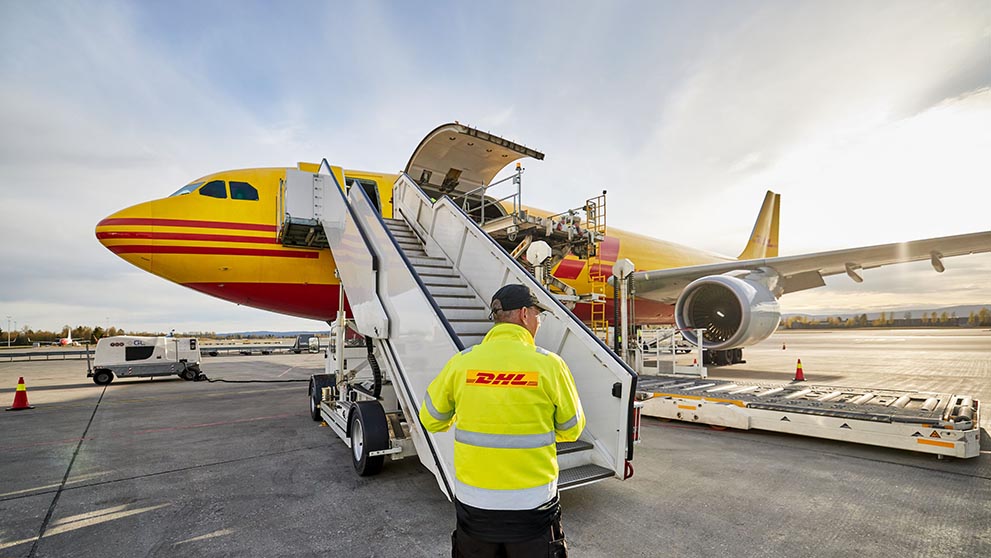Navigating the intricacies of international shipping to and from Cambodia involves more than mastering logistics; it requires a deep understanding of customs procedures.
Whenever a shipment crosses into or out of the country, customs authorities scrutinise the documentation and examine the shipment. This process ensures that all regulations have been adhered to, preventing potential delays or legal issues.
So, what should you do to ensure your shipments clear customs smoothly and reach their destination on time?
Why do packages get stuck in customs?
But first, why do packages encounter holds during the customs clearance process?
Some of the common pitfalls that can lead to customs delays include:
- Inaccurate or incomplete documentation: A primary cause for customs holds is the lack of accurate or complete paperwork. Essential documents like the Commercial Invoice must detail the goods' description, value, and tariff classification accurately to avoid delays.
- Misclassified Harmonized System (HS) Codes: HS Codes categorise items for customs and determine the applicable duties. Incorrectly classified items can result in miscalculated duties and cause delays during inspections.
- Misdeclaration of goods value: It is unlawful to declare goods at a value lower than their actual worth to minimise duty costs. Such actions can lead to harsh penalties, including fines and the confiscation of goods. It is crucial to always declare the correct value.
- Regulatory non-compliance: Each country enforces specific import and export regulations. Goods that fail to comply with these regulations may be held or refused entry at the border.
- Delays in duty payment: Customs duties and taxes are integral to the import process. Any delay in settling these payments can significantly impede the release of goods.
- Inadequate labelling and packaging: Improperly labelled or inadequately packaged goods are susceptible to delays or rejections, particularly if they include hazardous materials.
- Lack of communication: Effective communication with customs officials is crucial. Delays in responding to customs inquiries about your shipment can result in processing delays.
Know the different entry types
While proper documentation is important for avoiding customs delays, it is also important to be familiar with the customs clearance entry types and processes.
Entry classifications
Depending upon the value, commodity and entry type, the customs clearance process will vary.
- De Minimis: This entry type is part of a consolidated pre-clearance using manifest data. Shipments under this category must not exceed 50 kg and should have a value less than US$50 to qualify for this expedited entry. Shipments exceeding these limits require a formal clearance process.
- Informal: This entry type clears customs as part of an informal manifest clearance, which might necessitate duty payment based on the classification of goods. This process is managed under a consolidated bond without specifying a service provider.
- Formal: This entry type requires a formal entry process. In this rigorous procedure, a Customs Broker or Declarant inputs the Single Administrative Document (SAD) into the Automated System on Customs Data (ASYCUDA) system, ensuring all details are complete and valid for registration. Once registered, two signed copies of the SAD, along with the required documents, are submitted to customs for initial vetting and approval, ensuring compliance with all regulations.
International shipping regulations in Cambodia
Regardless of the import or export activity you plan from Cambodia, certain regulatory steps are mandatory for compliance.
The essential registration processes every trader should complete include the following:
- Business registration: Start by registering with the Ministry of Commerce's Department of Business Registration.
- Taxpayer Identification Number (TIN): You'll need a TIN to interact with the ASYCUDA, a system developed under the United Nations Conference on Trade and Development (UNCTAD). You can secure your TIN through registration with the General Department of Taxation, which functions under the guidance of the Ministry of Economy and Finance.
- Customs Registration: Following your TIN acquisition, register with the General Department of Customs and Excise to ensure your business is recognised for customs and excise activities.
- VAT Registration: Subsequently, establish a VAT account with the General Department of Taxation. This step is indispensable for managing your tax obligations effectively.
- Special Economic Zones (SEZs): Businesses operating within Cambodia's SEZs are required to complete an additional registration process with the Free Zone Management Department of the General Department of Customs and Excise, located in Phnom Penh.
What documents are required for customs clearance?
As mentioned, one of the main reasons for customs delays is inaccurate or incomplete documentation. Ensuring that all required paperwork is correctly filled out and submitted is thus crucial for a smooth customs clearance process.
Here's a guide to the key paperwork required for smooth customs processing:
For importers into Cambodia:
- Customs import declaration: Official form detailing the goods being imported.
- Commercial invoice: Specifies the value and description of the imported goods.
- Packing list: Lists all items included in the shipment.
- Road transport document: Necessary for goods arriving by land.
- Bill of Lading: Required for sea shipments detailing the goods and their transport.
- Import permit: Official authorisation for regulated goods.
- Insurance certificate: Proof of insurance coverage for the goods being shipped.
- Tax certificate: Document verifying tax payments.
- Certificate of Origin: Identifies the origin of the goods.
- Company registration: Proves the legality of the importing business.
For exporters from Cambodia:
- The aforementioned commercial invoice, packing list, road transport document, Bill of Lading, insurance certificate, and Certificate of Origin.
- Customs export declaration: Declares goods for export.
- Terminal Handling Receipts: Required for goods departing by sea.
- Export Permit: Necessary for controlled goods.
For specific items and transit goods, registration may also be required with government agencies that oversee the import and export of restricted and controlled goods:
- Camcontrol assessment: Required for food, chemicals, drugs, and electronic equipment.
- Ministry permits: Licenses are necessary for all animal and plant products.
- Phytosanitary certificate: Needed for plant products to verify they are pest-free.
For goods in transit through Cambodia:
- Transit documents: Such as a Certificate of Insurance and a transit route approved by customs.
Thorough and precise documentation facilitates a faster customs clearance process and helps avoid legal complications, ensuring that shipments are delivered on time without any delays.
Learn More About Special Case Documents
Help avoid customs delays

Before your exporter hands over shipments to DHL Express, help them make sure the paperwork is complete and accurate to help avoid delays in the customs process.
Review this checklist to help ensure faster customs clearance.
- Secure all required import/export permits before shipping
- Provide all necessary documents
- Use the appropriate HS codes to classify goods accurately
- List each commodity separately with accurate descriptions
- Always declare the true value of goods
- Check for consistency across all documents
- Make sure documents are clearly written, typed or electronically submitted
- Provide as much detailed information as possible
- Confirm that all associated costs are correct
- Ensure that the receiving country or person is not on a Denied Parties list
Troubleshooting customs holds
Now, what happens after import customs clearance is completed and you realise your package is still on hold?
Here’s a step-by-step guide to address such situations effectively:
- Contact the carrier: Immediately reach out to your shipping carrier for details about the hold. The carrier can provide specific insights regarding the reason for the delay and the customs office involved.
- Provide additional information: Often, customs holds occur due to missing or insufficient documentation. Be prepared to submit any additional information or corrected paperwork promptly. This may include providing further product details, proof of valuation, or revised documents.
- Pay duties and taxes: If the hold involves unpaid taxes or duties, arrange payment as soon as possible. Customs will not release the shipment until all financial obligations are met.
- Stay patient and persistent: Resolving customs holds can sometimes be a lengthy process, requiring patience. Maintain regular communication with the carrier and customs office, and follow up consistently to ensure the issue is being addressed.
Prohibited commodities
Before you ship with DHL Express, it's important to check whether your goods are restricted or prohibited by customs regulations. Search for “Prohibited and Restricted Items” on MyDHL+ for a full list based on your country of origin and/or destination.
If you are still in doubt about the acceptability of your goods, you can contact DHL Customer Service or your Account Manager prior to shipping.
MyGTS: Your gateway to easy international shipping
Shipping globally can seem complex, and incorrect customs paperwork is one of the main causes of delays for SMEs shipping across borders.
To speed up international shipping and simplify customs transactions, DHL Express has developed My Global Trade Services, an intuitive, all-in-one portal.
MyGTS is a free, user-friendly platform that will help you navigate all international shipping regulations seamlessly. You can log in with your existing DHL Express Business Account or register a new MyGTS account to access:
- Pre-shipment Planner: a dedicated tool to help your business comply with all import/export regulations and calculate Landed Cost.
- Accurate Harmonized System Codes: no more guesswork; MyGTS leverages AI to give you the correct classification for your shipment every time, making customs clearance faster. Search for HS codes using keywords or the code directory.
- Landed Cost for goods in any country: calculate your product cost, duties & taxes, and freight charges to enhance your pricing strategy and give your customers transparency over shipping fees – which builds trust with your business.
- Guidance on each country’s import and export requirements before you ship: no more goods held up at borders!
- Document access: essential for smooth customs clearance, MyGTS provides easy access to all necessary documentation for your shipments.
- A product catalogue feature: where you can save past searches, product details and tariff codes for quicker repeat shipping.
Ensure smooth customs clearance and global shipping success
Navigating the complexities of customs clearance procedures doesn't have to be a challenge. By understanding the required documentation, entry types, and customs processes, you can avoid costly delays and keep your shipments moving without worrying about how long customs clearance will take to complete for your exports and imports. Partnering with DHL Express ensures that you have access to expert guidance, seamless customs clearance services, and the tools needed for successful international shipping.
Take proactive steps today to streamline your operations—DHL Express is here to help you navigate the intricacies of customs with confidence and ease.
You can log in to MyGTS with your existing DHL Express account or register for a new MyGTS account. Click below for your options.





